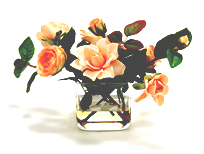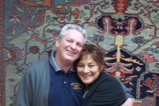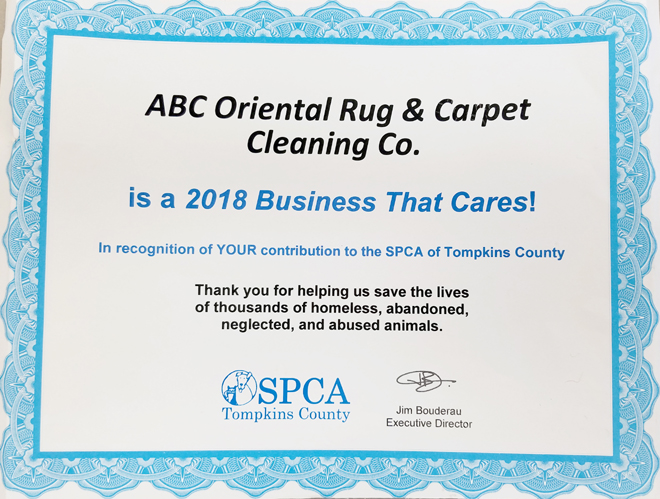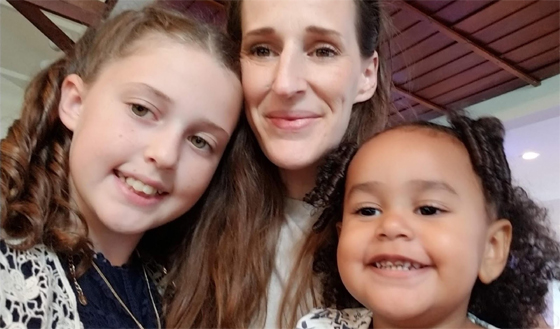ABC MONTHLY NEWSLETTER
MAY 2019
Welcome to Our Monthly Newsletter!
We hope you will enjoy this month's articles.
This month's topics are:
MISCELLANEOUS
ORIENTAL RUGS
NATURAL FIBERS
If there is a topic you would like us to cover in one of our upcoming newsletters, please call us at
607-272-1566
or contact us by clicking here.
GREAT NEWS!
GOT QUESTIONS?
NOW YOU CAN TEXT US at
607-272-1566
Happy Mother's Day!
All During the Month of May
20% OFF all Cleaning Services
*************
In-Home Carpet Cleaning, Tile & Grout Cleaning, and/or Furniture Cleaning
At our Facility, Area Rug Cleaning and/or Furniture Cleaning

PLUS
April 29 - May 11
Earn Gift Certificates
to share with MOM
$10 Gift Certificates
for every $50 spent

PLUS
Mother's Day
Gift Certificates
at 20% OFF
Call NOW to Schedule or reserve your gift certificate- 607-272-1566
DAGESTAN ORIENTAL RUGS
LOCATION
Dagestan oriental rugs (Daghestan) were one of the notable Northeastern Caucasus antique rugs and were closely related to the other rugs in that area, such as the Kuba and Derbend, as well as the Shirvan rugs of the Southern Caucasus. (Other notable rugs of the Southern Caucasus region were the Kazak, Karabagh, Gendje, Moghan, and Talish.)
As with many of the Caucasus area rugs, Dagestan rugs were often mislabeled as coming from a major collecting point for rugs, such as Derbend, rather than from the actual area in which they were woven.
Those
rugs actually woven in Dagestan tended to be finer than the Kazak rugs
of the Southern Caucasus region, but were not as fine as the rugs from
the Northeastern Kuba region.
HISTORY
Dagestan can be translated as the 'land of the mountains.' During the 13th to the 19th century, the Dagestan area was Persian. Thus, the rug designs were close to those of Persian rugs.
Dagestan is a republic of Russia located in the Northern Caucasus mountains, bordered on the East by the Caspian Sea and by Azerbaijan in the South. It is a land of very long and better winters with some of the most beautiful scenery that can be found in the Caucasus area. The capital is Makhachkala.
Because of its isolated location, it was not until the 1860s that Russia began to invade the area. What followed was a bitter war that lasted for more than 35 years as the Dagestan people, consisting of a wide range of ethnic groups, rose up (although futilely) to fight the Russians. Because of this war, many of the people moved to what is modern day Turkey and Iran.
When the Russians set up their administrative districts, they combined the mountainous area of what is now Dagestan with the flat area near the sea known as Derbend (Derbent), and called the entire area Dagestan.
Today, although Russian is the official language, there are more than 30 commonly spoken local languages. Unfortunately, this region is a very heterogeneous, ethnically diverse, and unstable area.
CONSTRUCTION OF DAGESTAN ORIENTAL RUGS
The antique Dagestan oriental rugs had wool foundations. The warp (up and down cords) were most often gray wool but goat hair was sometimes used for warp threads as well. The weft (side to side cords) could be different colors such as rusty red/brown, blue or white.
An identifying feature common to these rugs was the deeply ribbed appearance on their backs. This was the result of the use of extreme warp depression. (Depressed warps occur when the wefts are pulled tightly from either side, rather than put in with minimal tension. The result is the displacement of the warps into 2 levels.)
The knot was the symmetrical Turkish or Ghiordes knot. The pile was always wool.
The sides would have a fine selvage, usually colored and made of extra threads. The number and colors of selvages often can be an identifier to the area of origin.
The ends were finished in a narrow woven selvage followed by a knotted fringe.
The antique Dagestan rugs had soft, varied colors, typically blues, reds, yellows, and greens as well as highlights in rare colors such as golden saffron and apple green. A Dagestan rug from the 19th as well as the early 20th century would typically favor shades of blue rather than red.
DESIGN OF DAGESTAN ORIENTAL RUGS
To see examples with photos and to learn more about Dagestan oriental rugs, please continue reading here.
RANSOMWARE-BEWARE
WHAT IS IT?
Ransomware, a malicious software or malware, is a technique used by hackers (cybercriminals) to encrypt documents on a PC, lock out the user, and demand a ransom to regain access to the data on the computer.
This
type of malware can typically enter a PC either through an email
attachment or directly from a browser, if a website infected with it is
visited. It is also able to access a PC data through a network.
In recent years, extremely malicious ransomware attacks were caused by malware such as WannaCry (WanaCrypt0r 2.0, or WCry) and NotPetya. WannaCry was a type of ransomworm, a piece of malware that can self-replicate, and continue to grow exponentially, just as a real disease does.
NotPetya was different in that it didn't seem it was created to make money as other ransomware does. Even if users did pay, their data could never be recovered. NotPetya seemed to be a deliberate, malicious, and destructive attack.
These two wreaked havoc across the globe in 2017. They sparked so much alarm that more people than ever before had good reason to back up their files. Backing up files effectively deadens a ransomware attack. Even so, too many of us have short memories and cybersecurity experts warn against getting lazy about backing up files.
RANSOMWARE HISTORY
What is surprising is that ransomware in nothing new. The first instance of its threat was detected over 30 years ago in 1989, when an AIDS conference was 'attacked' by floppy disks.
Early ransomware contained a warning from the FBI, attempting to trick unknowing users into paying a fine or they would be accused of trafficking in child abuse imagery.
On March 19, 2019, a ransomware attack crippled one of the world's top aluminum makers in the U.S. and Europe, Norsk Hydro. The company is one of a handful that produce end-use products for aluminum.
The attack had far-reaching consequences. Norsk's special automated ultrasonic testing systems to precisely scan its products for impurities could not be relied upon, meaning customers such as automakers Daimler and Ford Motor Co. especially, would not be able to use their products.
The task to clean their systems or restore the backups was monumental. The lesson to learn is the more automation introduced into systems, the more and stronger the cybersecurity must be.
ENCRYPTION and RANSOMWARE
Encryption is the innovation that enabled ransomware authors to not only lock up the screen but encrypt all the data. This meant the data would still be locked up even if the user was able to uninstall the ransomware itself. The user had to make the payment in order to get the unlock key.
Cryptolocker, was an example of a piece of 'cryptoransomware' found active in 2013 and 2014. Petya has been active since 2016. Other examples of this type of ransomware include Cerby and Locky, among others.
Ever since the first attack, it has been a relentless duel of one-upmanship between the bad guys and the cybersecurity experts and researchers. Unfortunately, ransomware is still alive and well.
To learn more about ransomware attacks, who is vulnerable, how to be prepared should your computer or mobile data be hacked, and what to do if it happens, please continue reading here.
SEAGRASS NATURAL FIBER
Seagrass natural fiber is another of the eco-friendly natural fibers used to make rugs, clothing, furniture, and more.
Products made from seagrass natural fiber and other natural fibers such as abaca, bamboo, coir, hemp, jute,
and sisal (as well as cotton and wool), each with their earthy
texture, warmth, and natural beauty, can harmonize successfully with
all different color schemes and can bring a sense of calm and
relaxation to a living area.
Rug and
carpet products made from natural fibers come from sustainable and
renewable resources, which gives them a big advantage over synthetic
plastic fibers with manufactured colors.
Natural fibers (other than wool) are best suited for area rugs, since they are either too weak or too rough to be made into wall-to-wall carpeting.
Please note: Natural fiber rugs do not release toxic VOC gases as do synthetic fiber rugs, but beware of natural fibers attached to a synthetic backing, since VOC gases can then occur.
Natural fibers, in general, are more expensive than their synthetic counterparts. They also need specialty cleaning products as well as professional cleaning techniques, making them possibly more costly to maintain.
THE SEAGRASS PLANT
Seagrasses are a collective group of flowering plants that are biologically grasses. They are ancient plants that evolved nearly 100 million years ago! They are very fast-growing and a single acre of seagrass can produce more than 10 tons a year.
Seagrass is a reedy plant grown very much like rice and it gets its name from the fact it is planted in paddy fields that are flooded with seawater during each growing season. (Thus, the name 'seagrass.') It is typically grown in marshy areas but it is called Dragon Grass when it is grown in more arid soil where it will take on a darker color.
These grasses, sometimes also called water hyacinth, live underwater and grow best in the ocean or in any other salinated, standing bodies of water. There are approximately 60 species of seagrass that habitate marine environments around the world.They grow in what is known as 'seagrass meadows' that are literally 'prairies of the seas.'
Seagrasses produce oxygen for their biologically diverse environment. Oceans are able to absorb 25% of total global carbon emissions and the seagrass meadows account for 15% of that total.
Besides a wide array of
products, such as rugs, baskets, furniture, etc., seagrasses provide
wave and coastal erosion protection as well as fishing grounds.
SEAGRASS vs. SEAWEED
Seagrass can easily be confused with marine macroalgae, or seaweed, but there are many important differences between the two.
They differ in reproduction, structure, and how they transport nutrients and dissolved gases.
Another important difference is seagrasses are vascular plants and have roots, stems, and leaves, while seaweed are multi-cellular algae and have little or no vascular tissue at all.
SEAGRASS AREA RUGS
Seagrass natural fiber produces a strong, non-porous yarn for seagrass area rugs that is resistant to spots and stains.
Depending on the relative humidity in their surrounding environment, natural fiber rugs such as those made from seagrass can repel water but saturation of the fibers with water can cause dimensional change or shrinkage and the possibility of damage due to mold and mildew.
Immediate action to blot up any accidental spills and dry the area as quickly and as thoroughly as possible is necessary. Once a water spill on a seagrass natural fiber rug dries, the rug should return to its normal color.
PROS OF
SEAGRASS NATURAL FIBER
-
Seagrass natural fiber rugs are very
tough and almost impermeable. This toughness makes them less vulnerable to abrasion when compared to conventional floor coverings.
- The texture of the rugs when woven is softer to walk on
than other tough natural fibers such as sisal (though not as soft as
hemp.) A rug underlayment or pad can help to further soften the feel
underfoot.
- The dense weave of Seagrass natural fiber rugs makes them super strong and very durable. They
can be used in high-traffic areas such as entryways, hallways, living
rooms or game rooms. (But not in rooms with moisture.)
- The strength and
durability of seagrass fibers makes them a natural to be used in wicker
furniture.
- The fibers are non-porous and water repellent since the plant is grown in water. This can make pet accidents easier to clean up. However, as mentioned above, these rugs can be susceptible to mold and mildew damage from too much moisture.
- The fibers are stain-resistant because they are non-porous and because of their natural waxy coating. Dirt doesn't cling to the fibers and so they are less likely to stain. The thick fibers show minimal watermarks and stains. Stain protector coatings can be applied, if desired.
- Seagrass is good for the environment (eco-friendly) because it is fast growing and easy to harvest. It is also biodegradable.
- Seagrass natural fiber area rugs can provide noise insulation, an added benefit in high traffic areas.
- The fibers have anti-static properties. T
- The fibers have mild anti-bacterial properties and do not collect allergens.
- The natural lines in a seagrass natural fiber rug are in a row. Thus, if a seagrass rug needs to be seamed, the resulting seams will not be visible.
CONS OF
SEAGRASS NATURAL FIBER
To find out more about seagrass natural fiber rugs as well as tips for their cleaning and maintenance, please continue reading here.
THANK YOU!! WE LOOK FORWARD TO CONTINUING TO SERVE YOUR TEXTILE CLEANING AND REPAIR NEEDS!
Get New Posts Right To Your Inbox!
Get our monthly newsletter, just like this one, delivered right to your inbox each day. Just sign up and we will send you the best new articles and videos as they become available.
Your email address will NEVER be spammed, sold, or shared. You are welcome to unsubscribe at any time with the link in the email.
"The Cleanest Clean You've Ever Seen."
by
ABC Oriental Rug & Carpet Cleaning Co.
130 Cecil Malone Drive Ithaca, NY 14850
607-272-1566

ABC
Carpet & Rug
Spotting Guide

ABC Oriental Rug & Carpet Cleaning Co. has been family-owned and operated in Ithaca and surrounding areas for more than 48 years.
Our company is a reflection of our family name and pride.
Please Like us on Facebook!
for more information and to find out what we are doing at our business and in the community!
Stay Connected!
Links to Our Services
Allergy Cleaning
Area Rug Cleaning
Oriental Rug Cleaning
Rug Hand & Machine Repair
Upholstered Furniture Cleaning
Tile & Grout Cleaning & Sealing
We are proud sponsors of the SPCA of Tompkins CO:

Newsletter Archives


